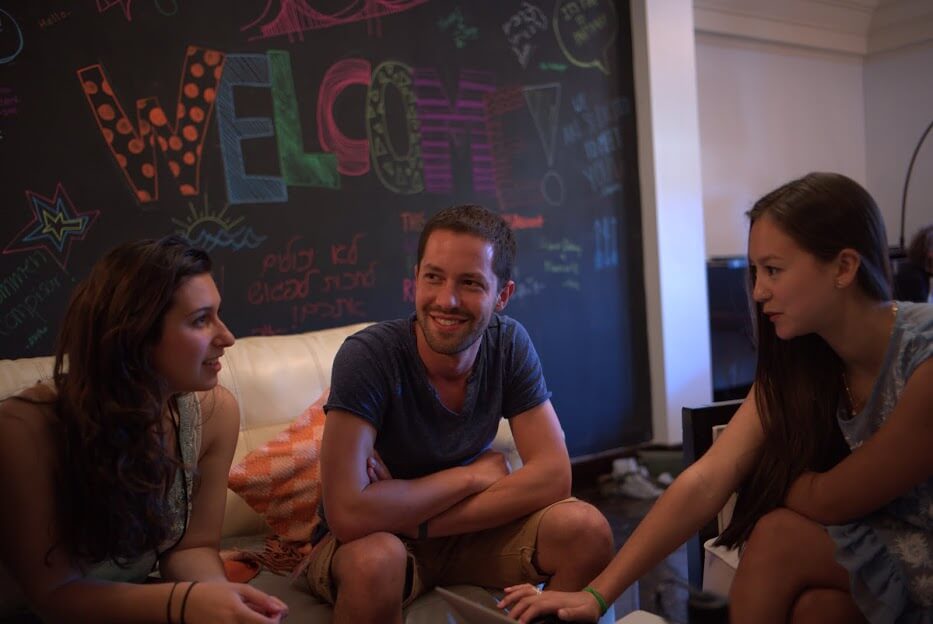Higher Ed Has Failed Students—Here’s How We Plan to Fix It

Share
Higher education, in general, fails students in three ways.
- It does not prepare students to succeed in life after college.
- The cost is significant and students often go into debt or work to put themselves through school (often, they do both).
- Many students drop out or don’t attend classes.
This isn’t news.
Today, we almost take these challenges as immutable facts, but they don’t have to be. We can shift the tide by changing how and what we teach, and by making the most of technologies that are already here. My organization, Minerva, is one of the few working to address these problems — here are a few solutions we hope will make higher education more effective in the 21st century.
Preparing Students for Life After College
The standard curriculum has three parts: General education, a major, and electives. The problem is, as they are typically taught, none of these is very useful for students after graduation.
General education is supposed to prepare students for life after college, but often it consists of a set of breadth requirements that are neither designed with any particular goal in mind nor are part of a coherent program. The major is typically of no use to students after graduation. (How many economics majors become economists? How many sociology majors become sociologists?) And electives are typically just whatever happens to interest the faculty, with little thought about what is useful for students.
To tackle these problems, we’ve designed our entire curriculum around the goal of imparting “practical knowledge”— knowledge students can use to achieve their goals.
Practical knowledge is broad and generative. Kurt Lewin famously said, “There is nothing as practical as a good theory.” Practical knowledge is not vocational training nor is it focused on pre-professional instruction. Practical knowledge should give students the intellectual foundations to succeed at jobs that don’t even exist yet.
We have intentionally created a general education program during the first year that provides students with a set of cognitive tools they can use in varied situations. After the first year, we’ve designed a set of majors and concentrations that allow students to expand on this knowledge and apply it in more specific, “real-world” contexts. As students progress through the curriculum, they increasingly personalize it to help them achieve their goals.
We want our students to be able to become leaders and innovators, and to adapt to a changing, increasingly global world. Given these goals, we could identify skills and attributes that are key to their success in the future.
To ensure that what we teach translates to the real world, we devised the capstone experience.
Kicking off in the first semester of junior year, the capstone challenges students to plan a novel solution to an important problem. Then, over the following three semesters, students practice all they have learned from their Minerva experience by carrying out an original capstone project in their chosen field (or fields) in preparation for the students’ transition to the real world.
In addition, in their senior year, each student works with two other students and a professor to design a seminar on a topic of their choosing—and then they take the seminar. For most majors, students take two such seminars. No other university program allows students to personalize their instruction in this way.
Lastly, Minerva students change locations every semester after their first year in San Francisco.
They live and study in Berlin, Buenos Aires, Seoul, Bangalore, Istanbul, and London. We use each city as a campus, taking advantage of local resources and integrating them into the curriculum. This approach broadens the students’ perspectives and extends their learning environment into a wide range of diverse urban contexts.
Say No to In-Class Lectures: Making Learning Active
Traditionally, students read assigned materials and then attend class to hear their professor give a lecture. They take notes, go home, do an assignment, and repeat. This model is backward — that is, students should not be wasting time in the classroom being lectured at by the professor.
In a standard “flipped classroom,” homework is done in class — where the teacher and other students are available as resources — and lectures are provided before class.
This is a good start. But we’ve gone further.
At Minerva, minimal information transmission takes place in class. In our “radical flipped classroom,” we move both the homework, readings, and lectures to before class and reserve class time for active learning. Students use information acquired through lectures and homework in critical thinking, creative thinking, effective communication, and effective interaction. They take part in group problem solving, debate, role-playing exercises and other activities that engage them.
This is challenging—but in a good way.
Students often prefer a traditional lecture format to active learning because lectures are easy: The student simply writes down what the professor says, memorizes it, and then does well on a test. Moreover, there’s the illusion of learning: The more notes, the more learned. Right? No. The vast majority of what was “learned” is soon forgotten. Active learning solidifies newly acquired knowledge by requiring students actually to use it after they’ve learned it.
Active learning does have an apparent drawback: Less material can be covered than in a traditional lecture format. But this drawback is more apparent than real. If retention is tested three months later, students who took part in active learning typically retain many times as much as students who received the material in just a lecture. Moreover, because active learning focuses on using information, it is an ideal fit to Minerva’s emphasis on practical knowledge.
Be Part of the Future
Sign up to receive top stories about groundbreaking technologies and visionary thinkers from SingularityHub.


Minerva’s active learning approach is complemented by programs that test and deepen students’ learning through practical application with community partners.
Whether working with the mayor’s office to reimagine the public use of San Francisco’s Market Street or partnering with an entrepreneurial incubator to evaluate submissions for funding, students are applying the what they’ve learned as part of their curriculum.
Technology to Facilitate Learning, Measure Progress and Broaden Experience
All classes at Minerva are taught using a cloud-based system that was developed solely to conduct educational seminars, the Active Learning Forum (ALF).
We use ALF for two main reasons. First, it allows us to teach more effectively and helps students to learn more effectively. In particular, our use of active learning allows us to apply the science of learning systematically. For example, we know that rapid feedback is invaluable; we take advantage of this by recording all classes, which allows faculty to score students and give them feedback soon after class.
Second, ALF allows students to take classes and faculty to teach classes from anywhere in the world. This means that we can have students in the same seminar who are living in different cities and can bring their experiences into class for comparison/contrast exercises. It also means that we can recruit first-rate faculty who can teach from all over the world.
Lowering the Cost and Increasing Student Engagement
Finally, it’s worth taking a step back and considering Minerva in a broader context. As noted at the outset, higher education in general fails students in three ways: First, it does not prepare students to succeed in life after college. Everything we do at Minerva is focused on this goal.
Second, our peer institutions typically charge about four times what we do for tuition.
Because we don’t own buildings, have sports teams (or even a climbing wall!), and so on, we have far fewer expenses and can actually provide a much more intimate, substantially higher quality educational experience at a fraction of the cost.
And, finally, many students drop out, either never completing college or not attending classes (and instead just showing up for the test). We hope to motivate students to continue their journey toward mastery by restricting our classes to small, intimate seminars, by requiring engagement and participation from our students, by raising expectations as opposed to lowering them, and by having students live and travel together all over the world.
Combining rigorous academics, small seminars, and four years of immersive global study, we have built Minerva for the 21st century. We have not only changed what students learn, but how they learn. However, the only measure of our success will be the success of our students, not simply doing well in school but also doing well in life after graduation — professionally and personally.
To get updates on Future of Learning posts, sign up here.
Image Credit: Shutterstock.com; Minerva
Stephen M. Kosslyn is the Founding Dean at Minerva, where he leads the School of Arts and Sciences and has defined Minerva’s pedagogic philosophy. Kosslyn came to Minerva from Stanford University, where he served as Director of the Center for Advanced Study in Behavioral Sciences, the world’s preeminent institution in the field. Prior to Stanford, Kosslyn spent 32 years at Harvard University, where he held a variety of positions, including Chair of the Department of Psychology and Dean of Social Sciences. Kosslyn has received numerous honors, including being elected to the American Academy of Arts and Sciences, receiving three honorary doctorates, a Guggenheim Fellowship, and the National Academy of Sciences Initiatives in Research Award.
Related Articles

Data Centers in Space: Will 2027 Really Be the Year AI Goes to Orbit?

New Gene Drive Stops the Spread of Malaria—Without Killing Any Mosquitoes

These Robots Are the Size of Single Cells and Cost Just a Penny Apiece
What we’re reading

